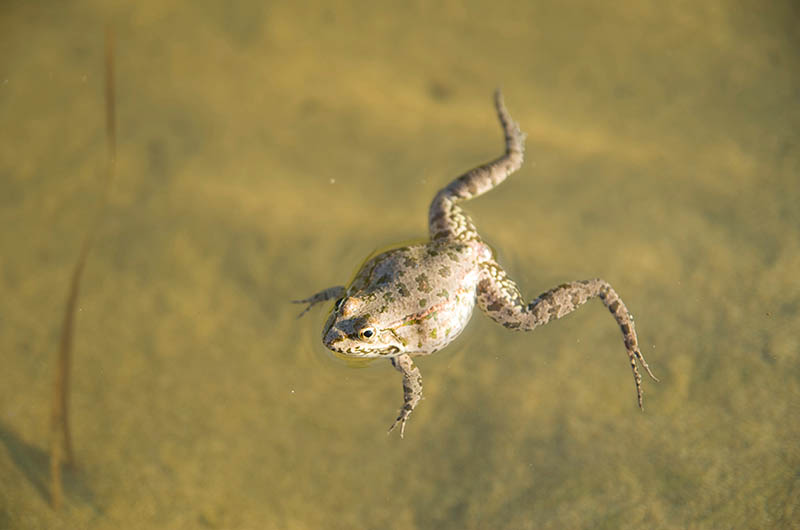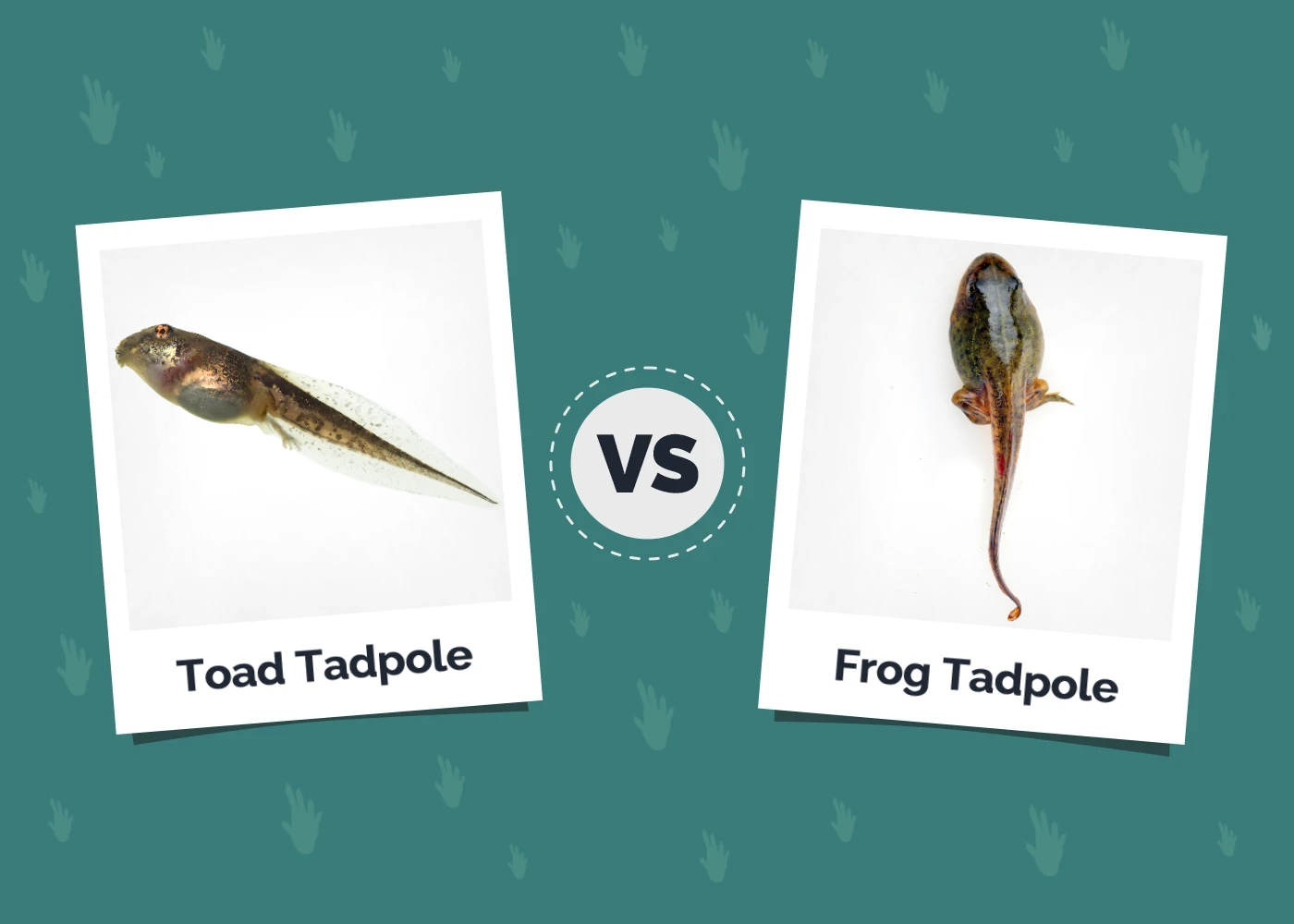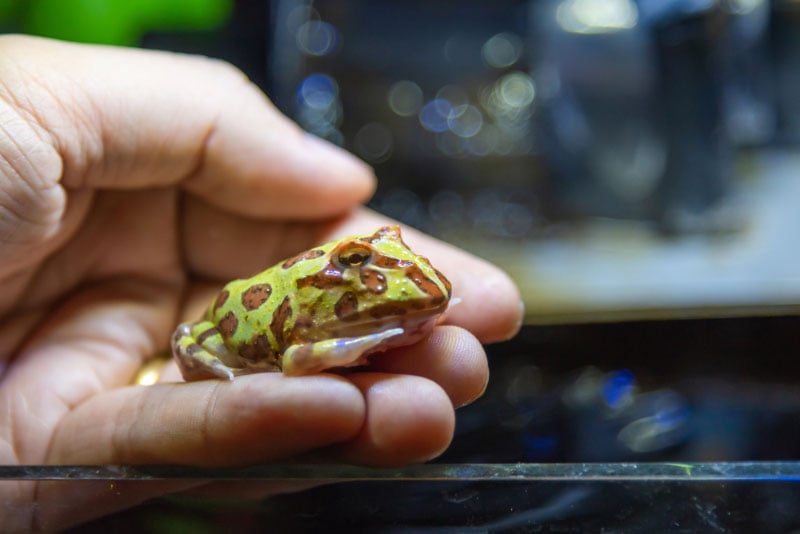Male vs. Female Pixie Frog: The Differences (With Pictures)
Updated on
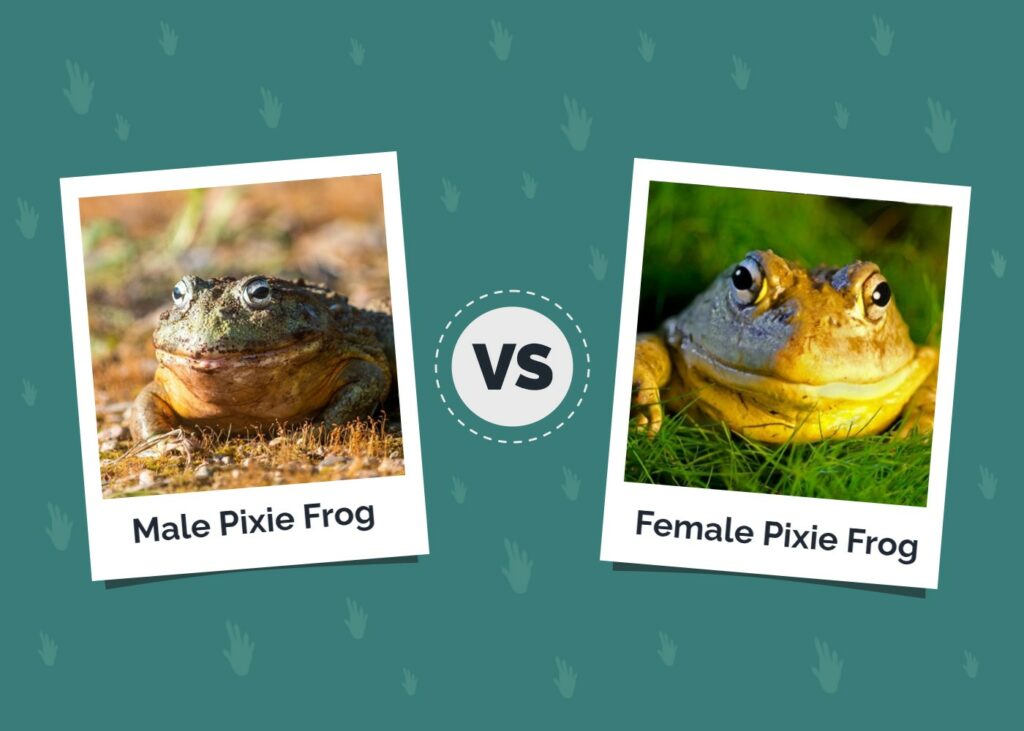
The African Bullfrog is the second largest frog in the world, only behind the aptly named Goliath Frog. Because of their scientific name, Pyxicephalus adspersus, it’s often called the pixie frog. While the most obvious difference between male and female pixie frogs is their different size, there are some other differences to be aware of as well.
If you’re thinking of adopting a pixie frog for yourself, you may be wondering whether a male or female would be a better pet. For your convenience, we’ve put together a handy informational guide designed to help you understand how male and female pixie frogs differ. Check out the details down below.
Click below to jump ahead:
- Visual Differences
- Pixie Frog 101
- Male Pixie Frog Overview
- Female Pixie Frog Overview
- Which Gender of Pixie Frog Is Right for You?
Visual Differences
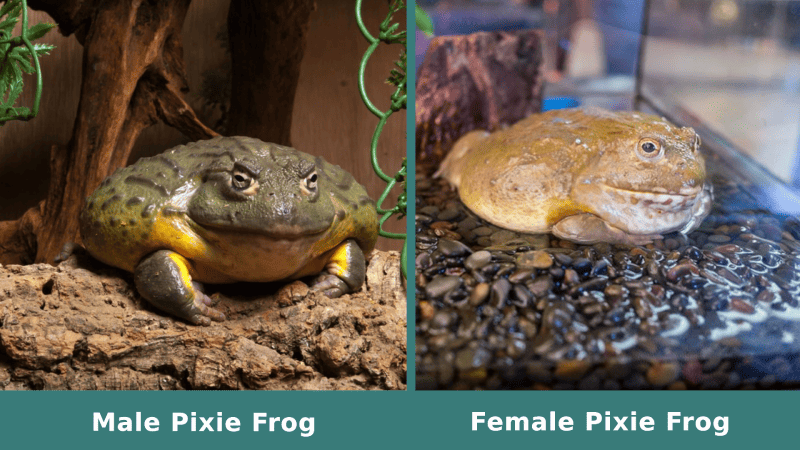
At a Glance
- Average length (adult): 4–0 inches
- Average weight (adult): 2–4 pounds
- Average length (adult): 4–5 inches
- Average weight (adult): 1–2 pounds
 Pixie Frog 101
Pixie Frog 101
Pixie frogs are one of the larger frogs out there, and their gruff demeanor makes them aloof, low-maintenance roommates. They prefer to chill in their habitats rather than hop around like smaller, more active frogs. They’re notoriously voracious eaters that will eat crickets, mice, worms, roaches, and lots of other creepy crawlies. Unlike friendlier frogs, you should keep handling to a minimum to avoid provoking aggressive behavior and to not damage their sensitive skin.
Like most amphibians, pixie frogs need specific conditions to thrive. You need a shallow water area for your frog to bathe and soak, plus plenty of dry land to explore. Popular materials for pixie frog habitats include peat moss, damp tropical soil, and coconut coir. These huge frogs have huge lifespans, too, living up to 20 years in captivity. That makes them a significant long-term commitment! That, combined with their specific preferred conditions, makes them best suited for more experienced reptile or amphibian owners.
 Male Pixie Frog Overview
Male Pixie Frog Overview

Personality / Character
Male pixie frogs are much more boisterous than females, famous for their deep bellow and macho personality. They move more confidently and aggressively than females, strutting around their habitat like the king of the castle. Males are very aggressive toward other males, and they’ve been known to fight, kill, and even eat each other. That makes males best left by themselves.
Appearance
Male pixie frogs are roughly twice the size of their female counterparts, weighing up to a whopping 3 pounds but averaging closer to 2 pounds. They’re also a lot longer, with the smallest males matching the females at 4 inches and more monstrous specimens reaching 10 inches. One other notable difference is their throats, which have an orange or yellow color.

Breeding
Breeding pixie frogs is a significant challenge because of the highly specific environmental conditions needed to trigger mating behavior, but it’s not impossible. The most important condition is a long dry period after introducing the male to a prospective mate, and closely watching them to ensure they don’t fight instead of mate.
- Larger than females
- More active
- More vocal than females
- More aggressive and difficult to handle than females
- Requires more space due to larger size
- Requires more food than females
- Can’t be housed with other males
Female Pixie Frog Overview
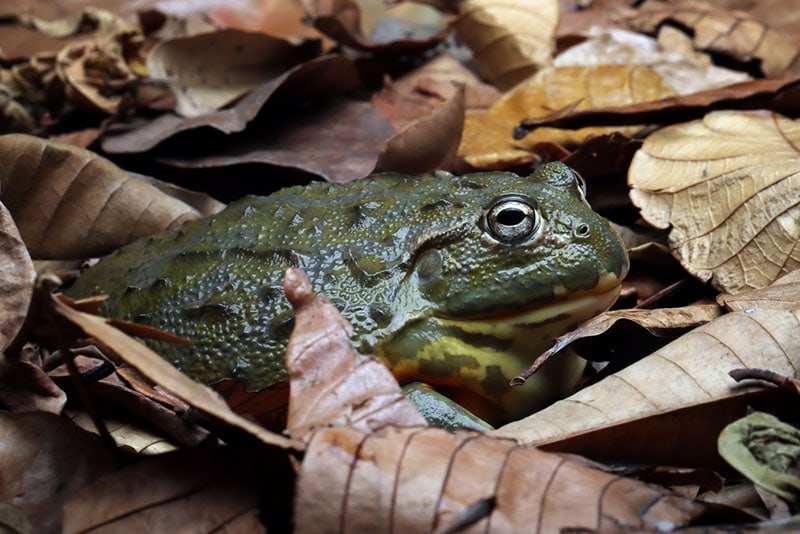
Personality / Character
Female pixie frogs are downright docile compared to males, preferring to lounge around. They’re also a lot quieter, which is ideal if you want a quieter reptile or amphibian as a pet. Females can sometimes be housed together if you provide enough space and supervision to nip any signs of aggression in the bud. While less vocal than males, female pixie frogs do sometimes make trilling noises and during mating season, deeper bellows.
Appearance
Female pixie frogs are more diminutive compared to males, measuring just 4 to 5 inches in length and around a pound on the scale. They have more rounded noses, compared to the males who have more beak-like noses. Lastly, while males have brightly colored throats, females have white or creamy colors on their throats.
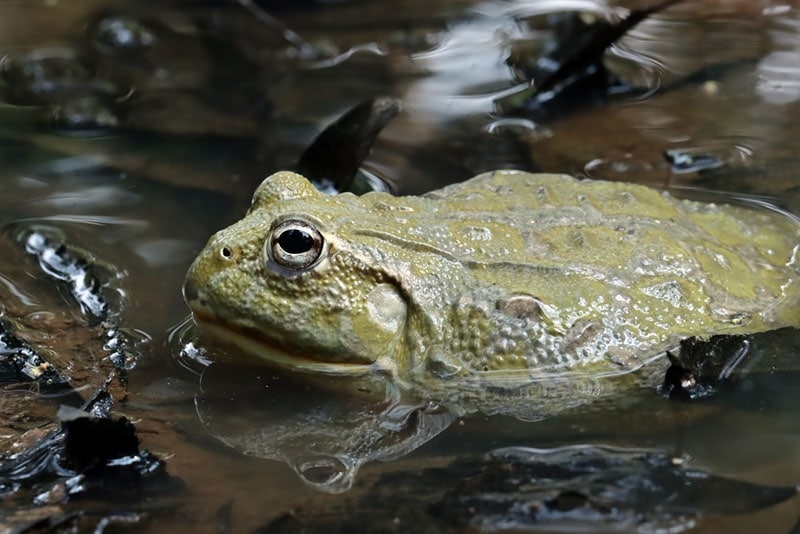
Breeding
As covered above, breeding pixie frogs in captivity is hard and nearly impossible to guarantee. Other than slowly raising the heat and humidity, supervising your mated pair is essential to ensure the male doesn’t attack the female instead of initiating appropriate mating behavior. At the end of the day, it’s also true that sometimes a female just isn’t compatible with a particular male. All you can do is try again with another male if you’re determined enough.
- More docile and less likely to display aggressive behavior
- Slightly easier to handle than males
- Less vocal, which is ideal for some people
- Requires less space than larger males
- Can sometimes house multiple females together
- Some individuals are more aggressive than others
- Females are unpredictable and could get along with another frog or just as easily attack
- Less vocal, which some people might not like
- They don’t move around as much as males
Which Gender of Pixie Frog Is Right for You?
It’s really down to whether you want a large, rowdy, and vocal male or a quieter, smaller female. They both make great companions for folks who want a low-maintenance amphibian but with a big personality. We recommend them if you’ve had some experience owning reptiles or preferably amphibians, because of their standoffish temperament.
Featured Image Credit: (L) Vaclav Sebek, Shutterstock | (R) san kal, Shutterstock

